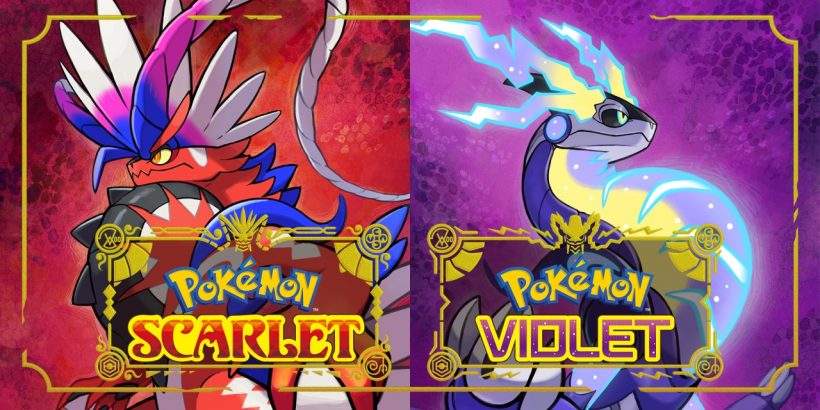Pokémon. It’s the highest-grossing media franchise of all time, comfortably beating out such juggernauts as Star Wars and Marvel. It has all the money, all the resources, all the knowledge behind it to ensure the games released under its name are nothing but the highest quality. Yet here I sit, conflicted. Because somehow, my experience with Pokémon Scarlet and Violet is simultaneously the best and most frustrating I’ve had with a Pokémon game to date. It’s broken. It’s buggy. It’s flawed. However, in spite of that, I can comfortably say that this is the most exciting and energetic Pokémon has felt in a long time. As I often find myself thinking with Pokémon these days though, it could have been so much more.
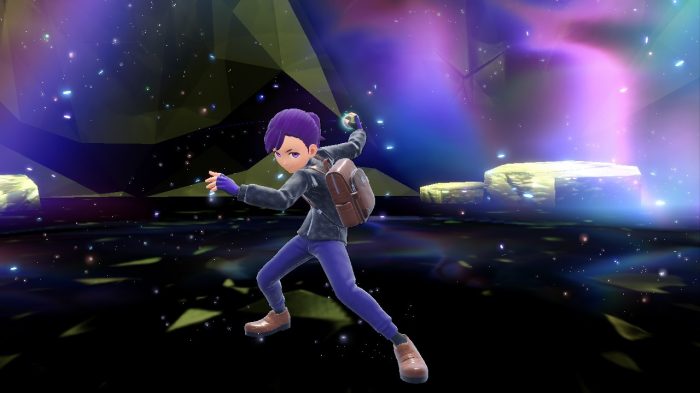
Pokémon Scarlet and Violet take the traditional Pokémon formula that we’ve all come to know and love (grow tired of) and mix things up just enough so that it feels fresh and evolutionary, without straying too far from what made the games a success in the first place. In a series first, you’re dropped into the open-world setting of the Paldea region, a surprisingly vast area to explore that acts as a culmination of all the previous Switch Pokémon games. If Sword and Shield and Legends: Arceus saw Game Freak testing the waters of open-world game design, then Scarlet & Violet see them dive right into the deep end. From here, you follow three separate storylines: Victory Road, Path of Legends, and Starfall Street. Where Victory Road is your traditional gym challenge, albeit with the option to tackle said gyms in any order, the other two storylines are a refreshing break from the norm.
All of this may make it sound as though this is a truly unique Pokémon experience, and while that’s true to a certain extent, all the features I’ve just listed come chock full of their own caveats and curveballs that limit their potential. Take the sheer openness of the game first. One of Pokémon’s biggest problems coming into this ninth generation of games was that it was far too linear. Said linearity was harming the games, in that there was really no surprise left in what you were getting from a Pokémon title. Outside of some different team members, every player’s experience was essentially the same. With Scarlet & Violet, however, throughout my journey I found myself comparing the differences with my friends. Whereas I went left after the first major city and fought a titan, my friend went right and tackled a gym. It’s nothing ground-breaking by any means, but Pokémon is such a connective experience that having the ability to truly play as you choose and share this with friends is quite invigorating. I found myself striving to reach areas I’d been told about for the promise of intriguing mysteries or powerful Pokémon, and it just added some more excitement to the overall experience.
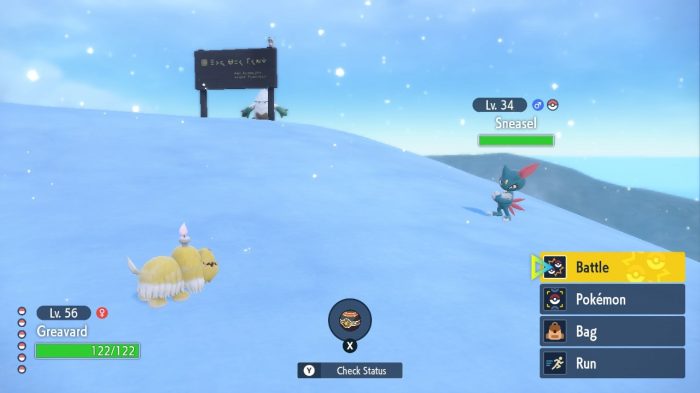
That said, the open nature of the games is detrimental in some respects. It’s perhaps a problem shared by many open-world games, but the difficulty curve bounces all over the place. You could certainly tell when you reached an area beyond your capabilities due to the levels and kinds of Pokémon found there, and early on this presents a genuine challenge. You can either attempt to persevere, a win providing a welcome boost, or simply return when you feel ready. The problem regardless of which of those options you choose, however, is that you reach a point perhaps midway through the game where it really doesn’t matter. You’re likely strong enough to hold your own in most battles by that point so the higher-level encounters don’t pose a challenge, whilst lower levelled areas become nothing more than a boring breeze to dash through. Any open world is a balancing act in design, and this one sadly fails to get it right.
Similarly, the three storylines on offer, while excellent from a story perspective, leave something to be desired in terms of gameplay. Now, I happily say that this is the best story Pokémon has had in a long while. Victory Road admittedly has nothing special to offer outside the aforementioned freedom of choice in the way you tackle it, but Starfall Street and Path of Legends are a real treat to experience. As is the norm with Pokémon games, there’s a team of “bad guys” hell-bent on causing chaos. Starfall Street takes this notion however and puts a very interesting spin on it, tackling some genuinely relatable themes along the way and telling a story you can really invest yourself in. Similarly, Path of Legends walks a surprisingly emotional road, culminating in an exceedingly exhilarating finale to all three stories. The narrative in mainline Pokémon games is something I’ve never really felt invested in, but the slightly more grounded and approachable take presented here had me paying full attention and yearning for more.
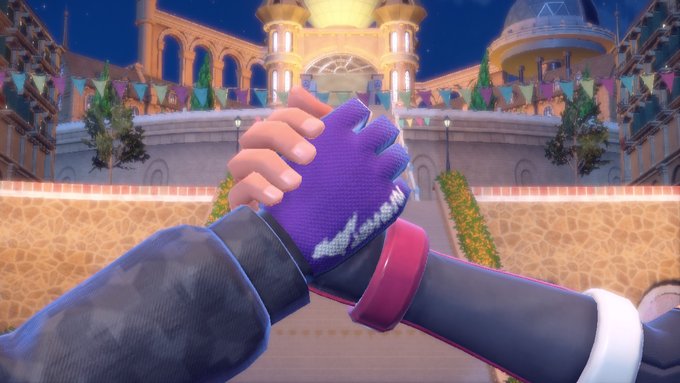
It’s a shame then that actually playing through these sections felt, at best, mildly enjoyable. The novelty of Starfall Street’s horde battle mode wears off rather quickly, especially given the relative ease of the sections, while the Titan battles in Path of Legend offer little more than a trivial challenge. Both are interesting ideas and provide a (brief) respite from the traditional experience but could use some refinement. Perhaps it’s a consequence of the target audience for these games, but for all the positive changes made to this iteration of Pokémon, it remains hampered by its inability to offer more than a basic challenge.
Nothing harms these games more however than the performance. Pokémon Scarlet and Violet simply do not run well at all. In my 50 hours of playtime, I didn’t experience many of the more overt glitches that some have reported, however, I did have my game crash twice, for seemingly no apparent reason. For a game of this calibre, of any calibre really, that’s just not acceptable. Furthermore, as much as I enjoy exploring the Paldea region, I’m sure I would enjoy it a lot more did it not look so rough. There’s a near-constant jagged outline to everything in the world and the framerate chugs incessantly. It’s a dour blot on an otherwise exceptional game, but it simply can’t be excused. As mentioned previously, Pokémon is the biggest media franchise in the world, Sure that comes with its own pressures, however, it should also come with the expectation that the games are given the time they need to be properly polished.
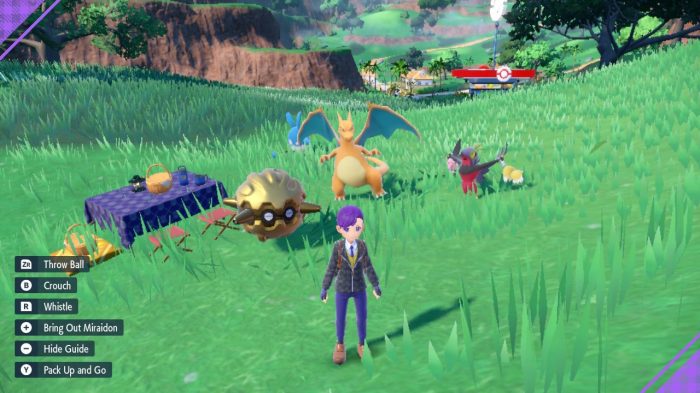
Despite all my gripes, I still maintain that they these releases Pokémon at its most enjoyable. It’s true the world is imbalanced, but it’s also a joy to explore. This is the version of Pokémon I’ve envisioned ever since I first picked up my Game Boy Color and a copy of Pokémon Crystal some 20-odd years ago. Traversing the world on the back of your chosen legendary, a myriad of different Pokémon flocking around you, it’s what Pokémon has always been to me, even if this is the first time they’ve been able to properly present it as such.
The details are what really stand out to me about this game. Take a moment to slow down and you’ll spot the work that’s gone into making this world feel so vibrant and full of life. The Pokémon aren’t all just milling about the place, rather, they have personalities and traits that make them feel alive. Whether it’s the Nymble that freaks and scurries away the moment you so much as look in its direction, or the Tinkatink that readies its unwieldy hammer and charges in your direction, or even the sleepy Komala gently napping under a tree, these games are brimming with gleeful and surprising moments.
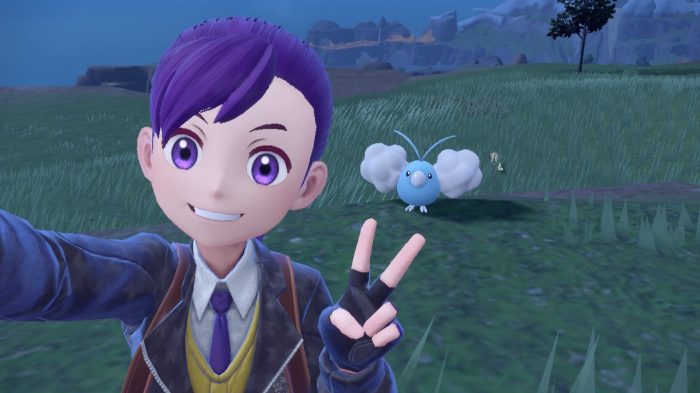
Put plainly, it’s just an incredibly fun experience. It’s impossible to pin down one thing alone that makes it so, as the culmination of the design, freedom, and new mechanics just make it a blast. Tera raids, while hampered by exceptionally poor online connections, are a major improvement over the Dynamax raids from Sword and Shield. When working correctly, they’re fast-paced, they’re intense, and they evoke a feeling of genuine accomplishment when you emerge victorious. Terrastalising itself also adds a new layer of depth to the battling experience. Akin to the strategic importance of Mega Evolution, but accessible to every Pokémon, Terratalising has the ability to really turn battles on their head. Suddenly that super-effective move you were readying yourself to pull out has no effect, and your whole game plan has to change. It’s a way of making battles more strategic in a more accessible manner than the metagame usually has. Not everyone cares about or understands the complexities of EV training yet may still crave a more complex challenge; Terrastalising provides that opportunity, just in a slightly limited capacity.
There’s so much more I could say about Pokémon Scarlet and Violet, as I find them to be such endlessly fascinating and frustrating experiences. I don’t think there’s a game I’ve played whose performance has irked me so much, yet I still consider it to be a worthy contender for game of the year. At the end of the day though, the performance woes of these games can’t be understated and go a long way toward genuinely hampering an otherwise enjoyable experience. A touch more refinement to several mechanics and a major performance overhaul could make these standout titles, but until such a time, Pokémon Scarlet and Violet fall short of being truly great.
Pokémon Scarlet & Violet £49.99
Summary
Pokemon Scarlet & Violet brings forth a much-needed evolution for the series. The core gameplay has been refined and rejuvenated to please fans new and old, however, its performance betrays it, preventing these games from reaching their full potential.

